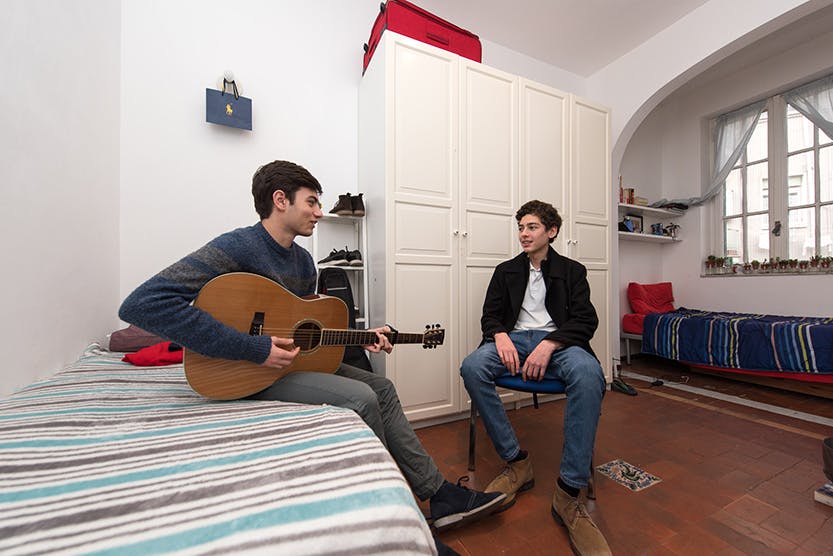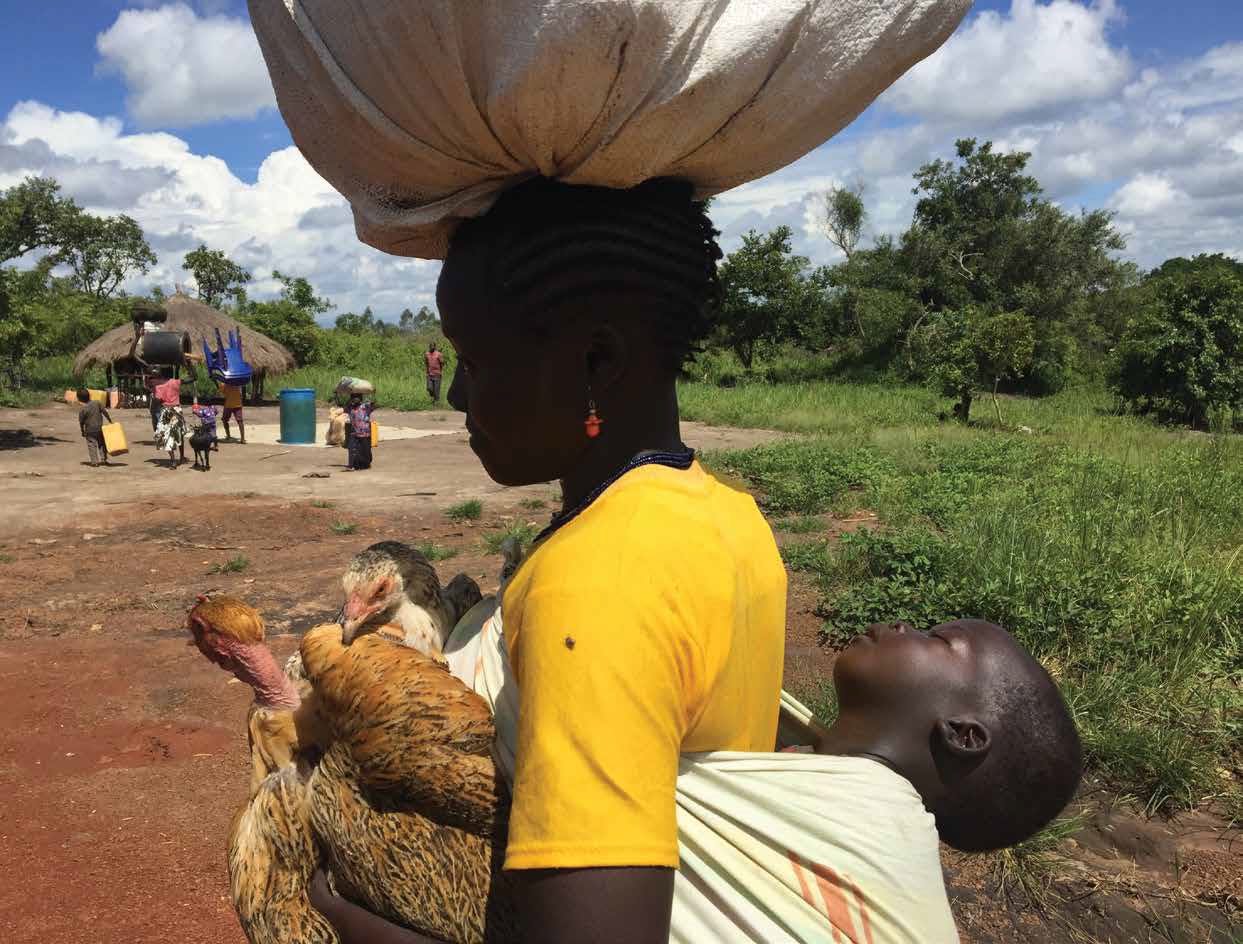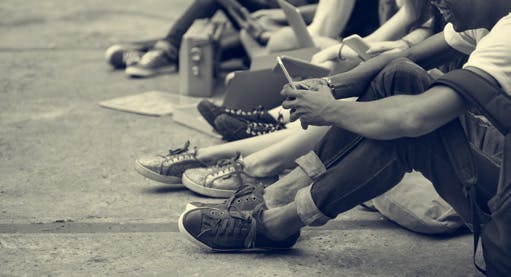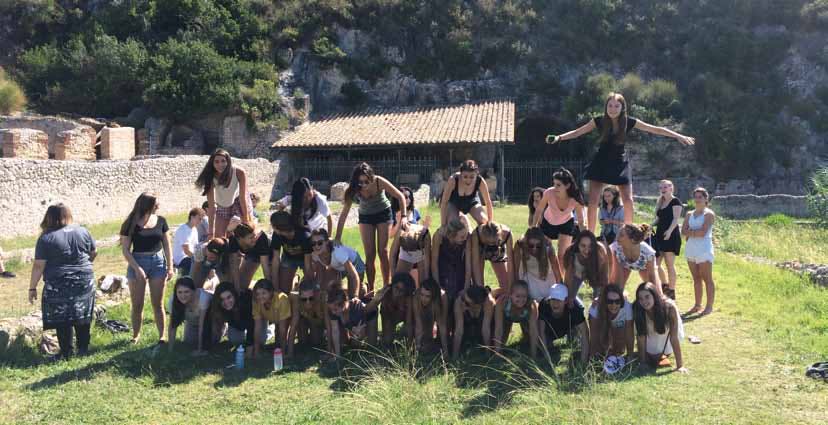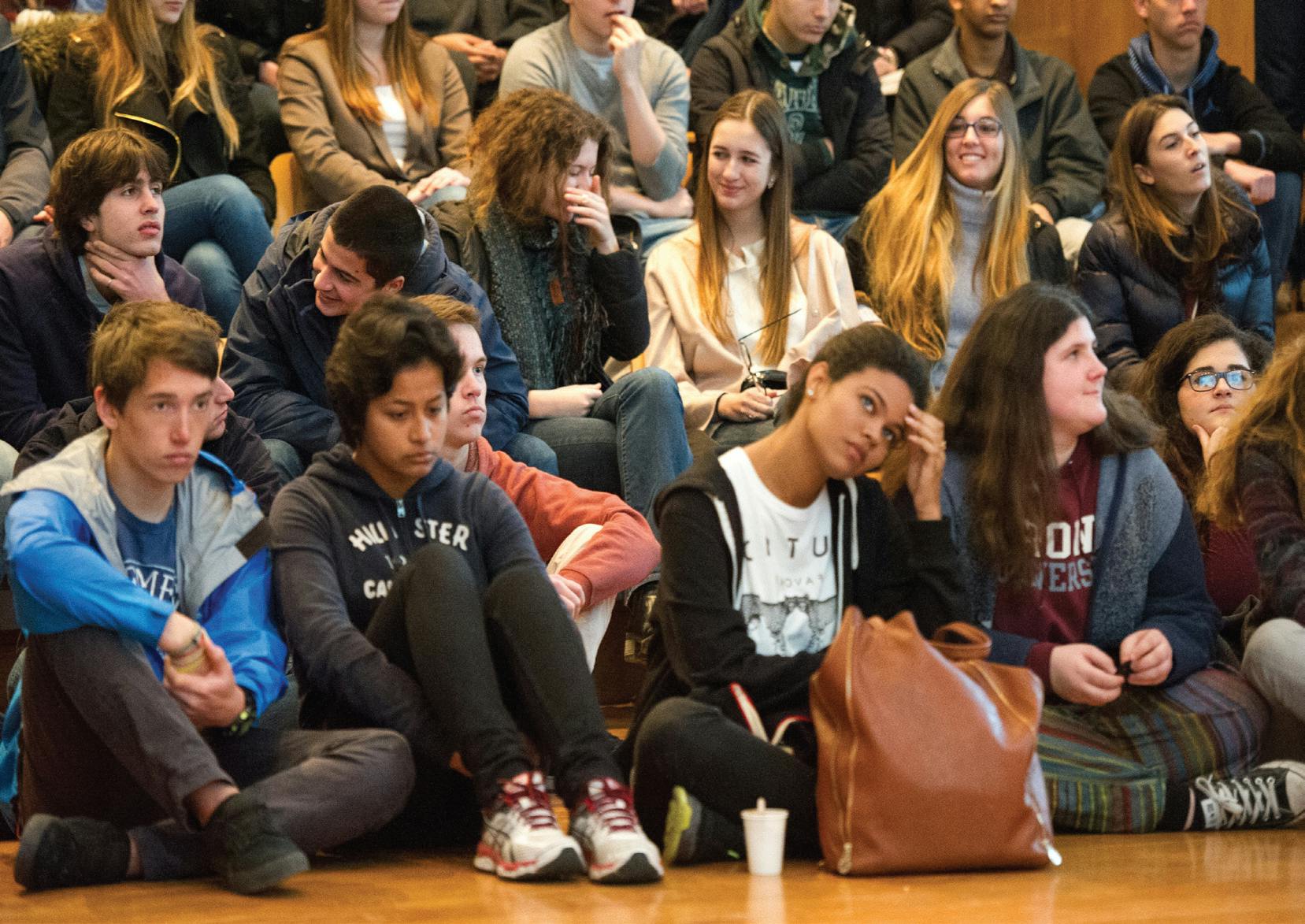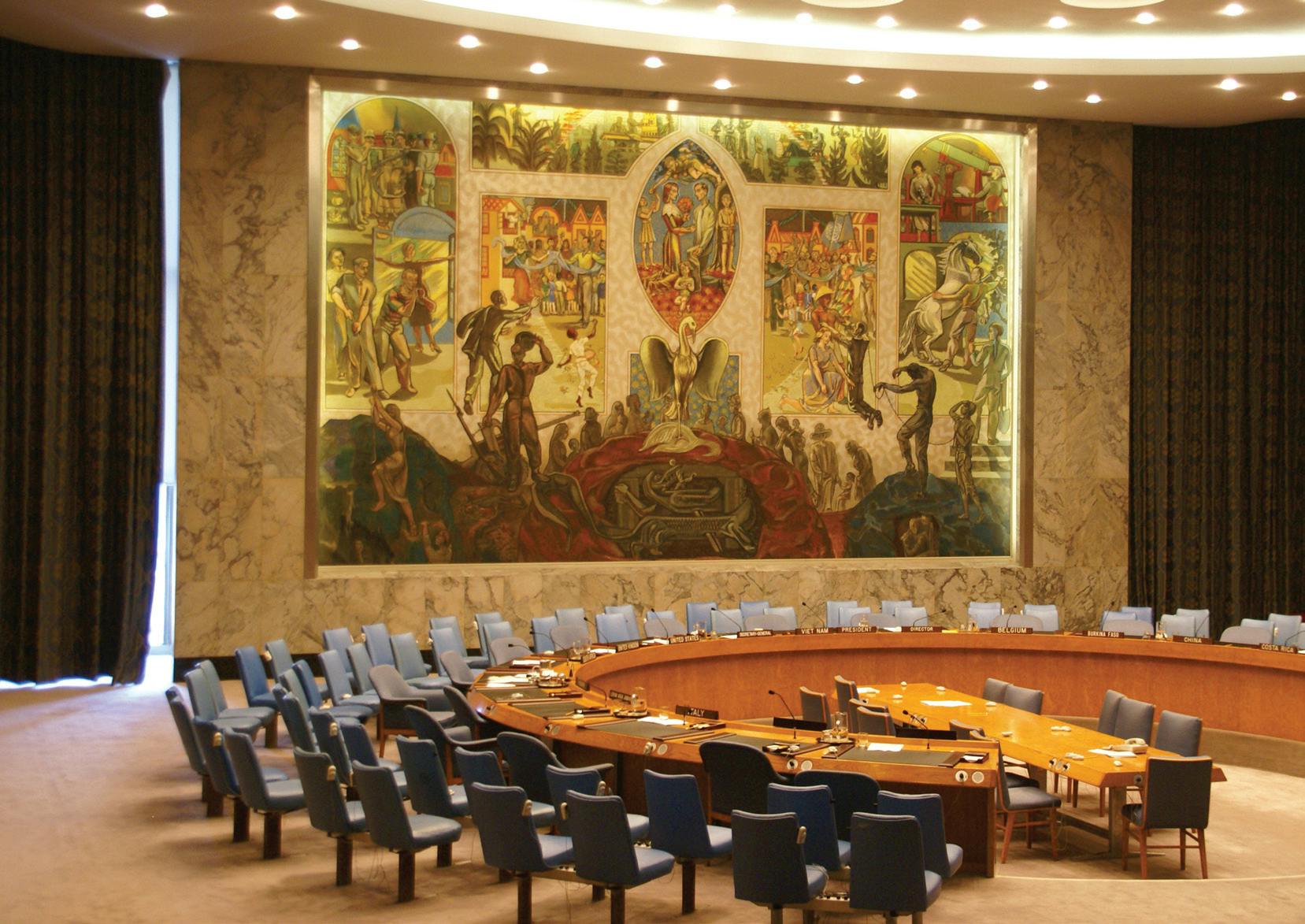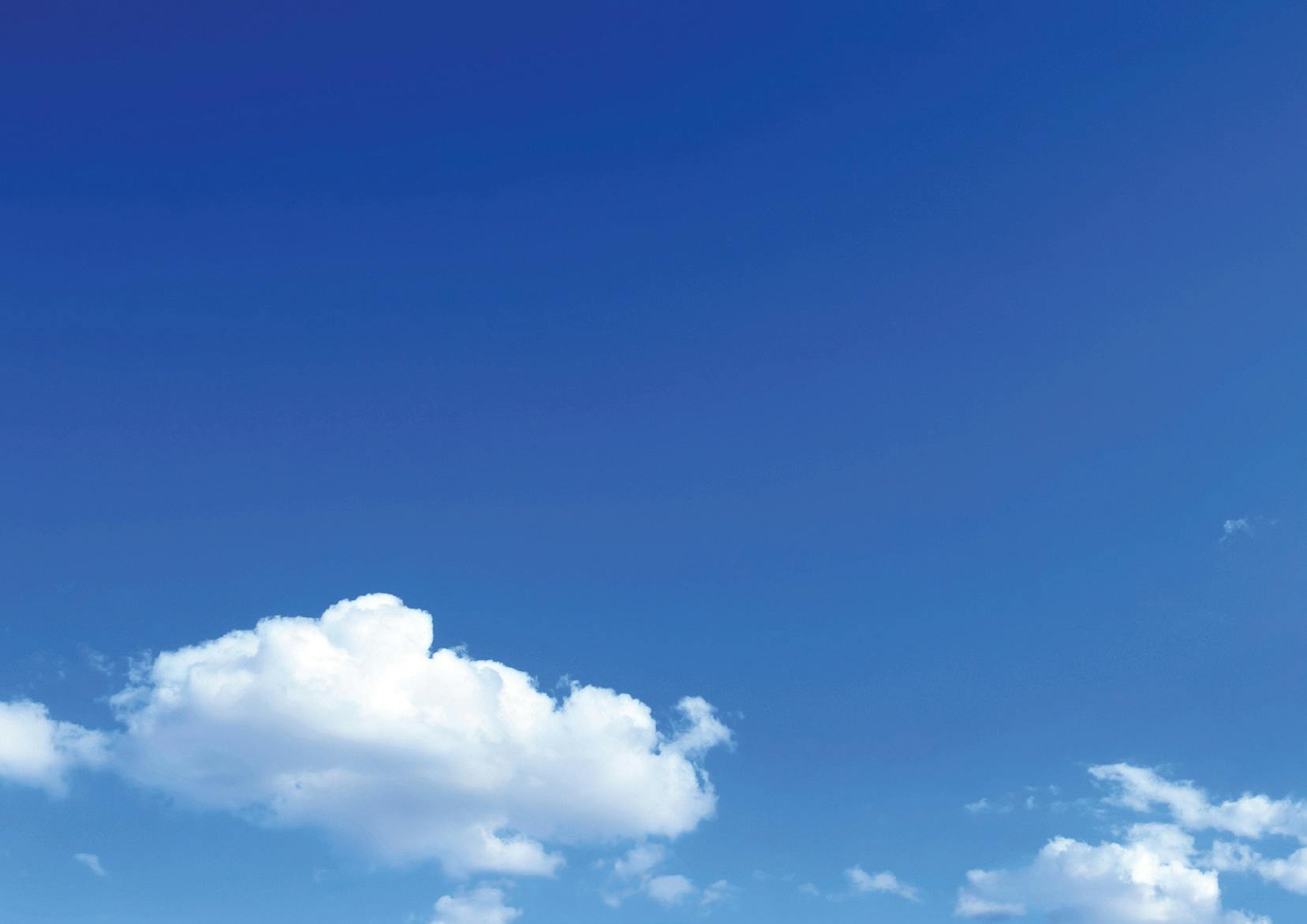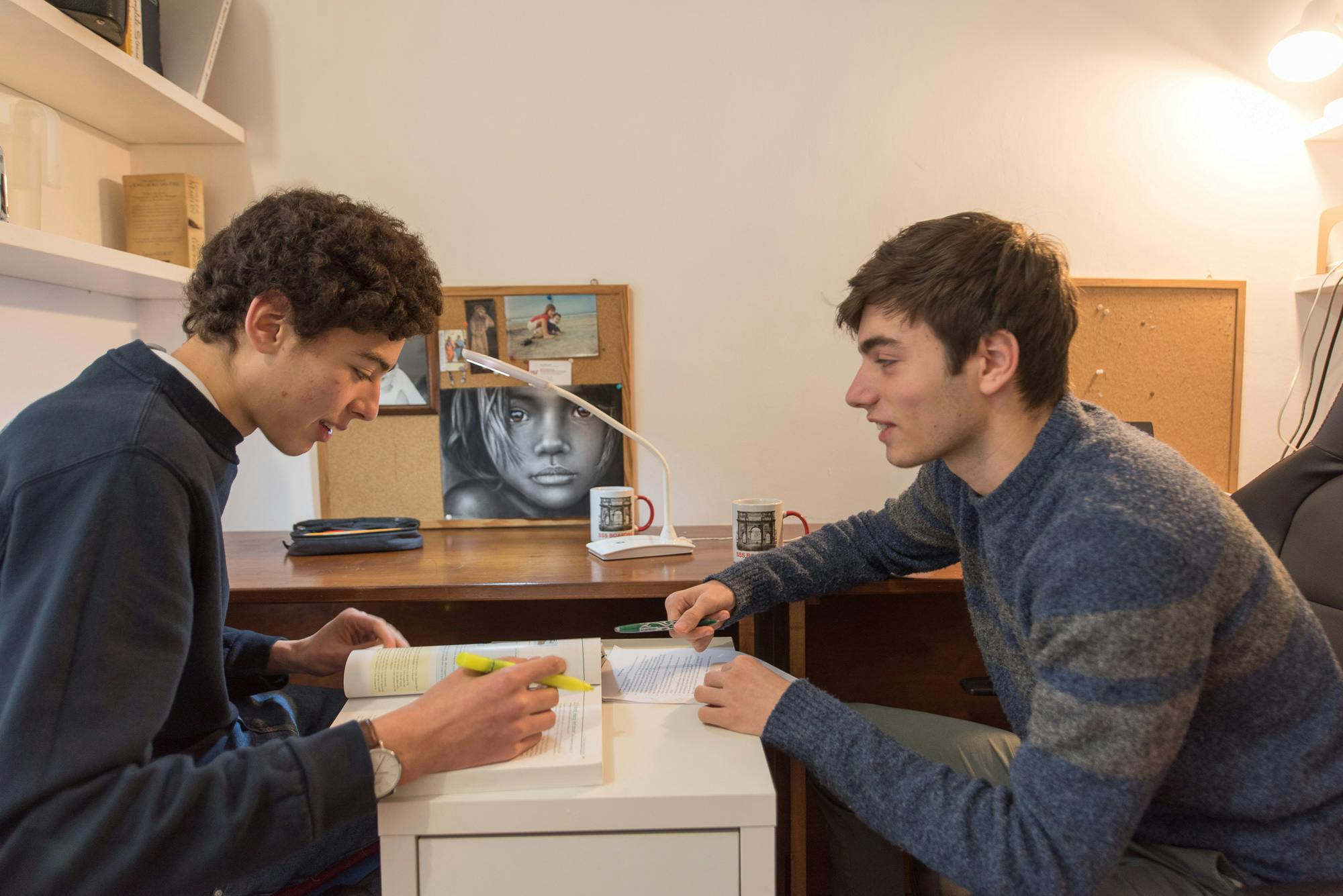
A Sense of Balance
In the boarding community, how do we support and encourage the development of healthy lifestyle choices? For starters, we are conscious of the implicit messages we send through our own actions, particularly given the intensive nature of this program. The boarding faculty are all committed to residential life, and each of us seeks health and wellbeing in our own ways. By bringing our passions to the forefront and sharing them with students, we hope to underscore the importance of integrating what brings satisfaction and groundedness to our own lives. This comes in many forms. For me, this means yoga, meditation, and meanderings in this extraordinary city. I have been able to share this passion with a number of boarders, many of whom, have developed a deep appreciation for yoga themselves. For other teachers, it is the thrill of boarding soccer from 9-10pm, (post study hall, pre-bedtime), or the chance to move the body, work up a sweat, and bond with teammates. Others play tennis, cycle along the Tiber, run in and amidst Rome’s monuments, play basketball, or go to one of the local gyms. We encourage and support the development of what makes each of us thrive and, in turn, by sharing these interests, the spirit around them grows and attracts others.
Naturally, we are thrilled about having the opportunity to travel and getting to know Italy better. We schedule a special boarding trip each month to give boarders the opportunity to take a break and shift locales. Having focused time on the train as we speed up to Venice, followed by long, winding walks in La Serenissima is both refreshing and rejuvenating. While we offer the expected city trips each year, in response to student requests, we have also created more relaxing excursions to counterbalance the academic intensity they face. The all-boarding orientation trip to Sperlonga kicks off the year in September. The rest of the semester sees another coastal weekend in Amalfi, and a walking and cooking getaway to Learning Center Director Fiona Stewart’s Umbrian home. In winter, most of the boarders celebrate mid-term break by participating in the annual ski trip; a small group ventures off to the hot springs of Bagno Vignoni to soak away the winter chill and visit the Val D’Orcia; a group peers into the crater after having climbed Mt. Vesuvius; a passel of seniors enjoy a pre-exam getaway to my house in Umbria, and lastly, a second trip to Sperlonga is in the offering.
In building community, individual relationships of all sorts are forged. We take real joy in each other’s successes and hope to be there to support students during tougher periods. In the day-to-day dealings with the academic pressures students face, we take a focused and measured approach that is built upon helping students identify solutions to the challenges they are experiencing. It is important that every student feels connected to the boarding faculty and/or other support figures around them so that they feel comfortable letting someone know they need support. We integrate the nurse and school counselors early on in the school year through group meetings that focus on transitions and the feelings that may come during the opening months of school, as well as through individual appointments, to introduce students to the additional support figures that exist for them. In this way, when a student feels particular pressure, he or she has someone to reach out to.
Many of the richer conversations with students take place at unspecified times: at 11pm as we say goodnight, over a leisurely weekend breakfast, or as we pass each other in the halls. These exchanges involve a myriad of emotions: the relief of having finished a project; sadness about an exam that didn’t go well; excitement about the arrival of a visit from family; worries about whether they will meet a university offer; feeling overwhelmed at that work that still needs to be done. We listen first of all, recognizing the successes and sharing in the delights, and during those challenging times, we try to help students identify what steps they can take in the moment. Sometimes, students are overcome with concerns about the future, so we delve into the here and now and work on what is concrete and specific. Through these layered processes, students become better at being able to apply them themselves. As the months pass, they demonstrate their independence in so many ways – they know how to take care of themselves, how to work hard, and how to balance it all off with relaxation and fun. This is, ultimately, our goal for them, and our approach to a healthy residential program.




